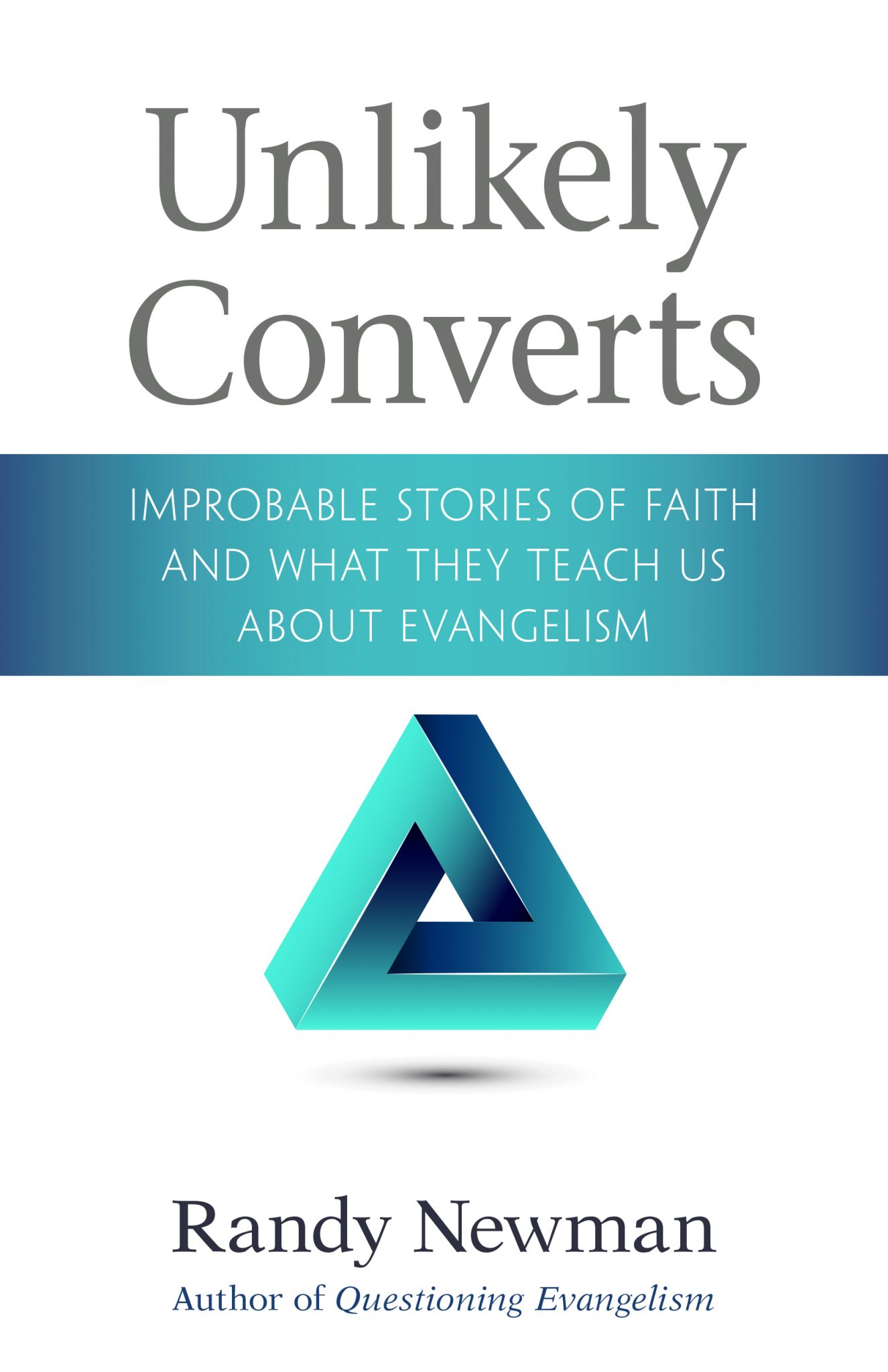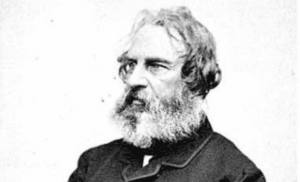Perhaps nothing is more encouraging to Christians than a conversion story. Like our Savior, we rejoice to hear of even one sinner who repents, which makes the latest offering from Randy Newman, Unlikely Converts: Improbable Stories of Faith and What They Teach Us about Evangelism, a particularly heartening read. He tells the stories of many who have come to faith in Christ, some in rather unexpected ways.
This is familiar ground for Newman. His well-known work Questioning Evangelism reflects on the evangelistic method of Jesus, helping us engage others with the gospel by asking questions. But this newest book follows a different path. Here Newman—senior teaching fellow with The C. S. Lewis Institute in Washington, D.C.—speaks with multiple unlikely converts, researching their testimonies, then gleaning observations both practical and also biblical for all would-be evangelists.
Evangelism Is a Process
Coming to Christ takes time. If there’s one lesson that permeates Newman’s research, it’s this: people generally accept the gospel gradually. This isn’t to argue against conversion as a work of the Spirit at a point in time. But it’s a recognition that the Spirit often opens blinded eyes through a series of events. He tends to do so through the witness of believers over a period of weeks, months, even years.
Some do experience sudden conversion, of course; there’s no prerequisite to faith. But when we see dramatic transformation in a moment, we sometimes overlook all that led to that point. For example, instantaneous conversion stories from the Bible are themselves often the result of what some might call “pre-evangelism.” Whether it’s the woman at the well (John 4), the Ethiopian eunuch (Acts 8), Cornelius (Acts 10), or the Philippian jailer (Acts 16), each had prior exposure to Scripture and the believing community.

Unlikely Converts: Improbable Stories of Faith and What They Teach Us About Evangelism
Randy Newman
Unlikely Converts: Improbable Stories of Faith and What They Teach Us About Evangelism
Randy Newman
In this book, Randy Newman shares surprising conversion stories straight from those who took the long way around to Christianity. He considers current cultural trends that make evangelism more difficult today. Then with his characteristic upbeat style, he offers practical ways, and even exact wording, to proclaim the gospel and includes a plan of action. In the end, Unlikely Converts encourages us to remember that while the Great Commission requires us to share the good news, it does not require perfection, only confidence in the message.
Given this point, Newman suggests a number of applications. He reinforces the benefits of pre-evangelism, the work we do to prepare others to receive the gospel. But he also advocates for the work we do to prepare ourselves with the gospel, what he calls evangelistic brainstorming. To this end, each chapter concludes with questions to help us think ahead of time, before we try to speak the good news with others.
People generally accept the gospel gradually.
Understanding the process of conversion helps our evangelistic approach in other ways. Christians tend to withhold the gospel based on our assumptions of others’ interest in the gospel. But as Newman shows in the numerous stories, unbelievers rarely verbalize what they’re internally processing. In fact, sometimes their thoughts are in direct conflict with their demeanor and actions. Just because a person leads a promiscuous lifestyle doesn’t mean they’re convinced it’s either right or good. Only when someone takes the initiative to ask a personal question, give them a Bible, invite them to church, or speak the gospel is their internal processing on spiritual matters engaged.
Recognizing that conversion takes time also frees us from feeling like we must seal the deal in any given conversation. We haven’t failed if someone doesn’t respond immediately. We also don’t have to have all the answers on the spot. Simply starting the conversation is important. We can leave people with nuggets of truth. Or we can challenge them with a provocative question, then give them space to process their thoughts and return. As Newman puts it, “We want to engage more than amaze.”
There is a potential pitfall here. When we observe that people tend to believe gradually, does that mean we should always take a gradual approach? I don’t think so. Also, is it possible that these testimonies reflect more on the way we tend to approach evangelism (tentatively) than on the way God saves? These are significant questions. And however we might answer, I think Newman would agree that being patient in our evangelism doesn’t imply that we should avoid difficult truths (such as hell or judgment) or ignore calls for repentance.
Evangelism Is a Community Project
Reading the stories of how various people come to faith in Christ, you soon realize that effective evangelism happens in various ways, and it includes a variety of people. One plants; another waters; but God gives the growth (1 Cor. 3:6–9). Evangelism, like gardening, is a process, and it often involves many participants. New converts typically need to hear the gospel more than once, and they need to hear it—sometimes in a different way—from more than one person. This book helps us see the part each of us can play with our variety of gifts. No one person or personality makes for the perfect evangelist.
This realization also plays into the importance of the local church for evangelism. As Newman asserts, “The concept of body evangelism can’t be overstressed. If people need to hear multiple presentations from numerous voices and see the gospel lived out in a variety of ways, what better place for that to occur than in a local church?”
Evangelism, like gardening, is a process, and it often involves many participants.
Over and over these stories show how people are attracted to Christ through his people. This, to me, makes total sense, because Christian conversion is more than just picking a belief system. It’s even more than “choosing Christ.” It’s like finding a family. We’ve all heard that Christian hypocrisy is one of the primary reasons why people reject the gospel. That assertion, if true, is truly disheartening. But it can also be very encouraging. Because, if the inverse is true, it would mean that a healthy church and gracious Christians will be a profound reason for unbelievers to receive the good news about Jesus.
Of course, this shows that, no matter how extraordinary someone’s conversion may be—and all Christian conversion is miraculous—evangelism tends to be ordinary. Many of these stories are of people who were, so to speak, surprising converts. But their conversion tended to be the result of the ordinary means of kindness, prayer, service, patience, and faithful witness.
Unlikely Converts, Unlikely Evangelists
Newman’s book about unlikely converts is perhaps most helpful as it expands our categories. He wants us to see the capaciousness of the gospel, and of the act of evangelism itself. The gospel is for everyone. And the task of evangelism includes every Christian—even those you’d least expect. In all of this, the underlying theme Newman emphasizes is God’s powerful work in salvation from beginning to end. Nothing will be impossible with God. As such, Christian conversion is never truly “unlikely.”
The gospel is for everyone. And the task of evangelism includes every Christian—even those you’d least expect.
With the book drawing to a close, after introducing us to so many others, Newman takes time to remember his personal journey to faith in Christ. It’s almost as if he can’t help but tell his own story. It’s the story of a disaffected Jewish kid, disconnected from God, but who listened in on his friends’ prayers. It’s the story of a teenager who was invited to youth group and perhaps went for the wrong reasons. It’s the story of an intellectual college student who drank too much but still felt empty. It’s the story of a young man who kept encountering Christians, kept hearing the gospel, and who eventually became an unlikely evangelist.

































